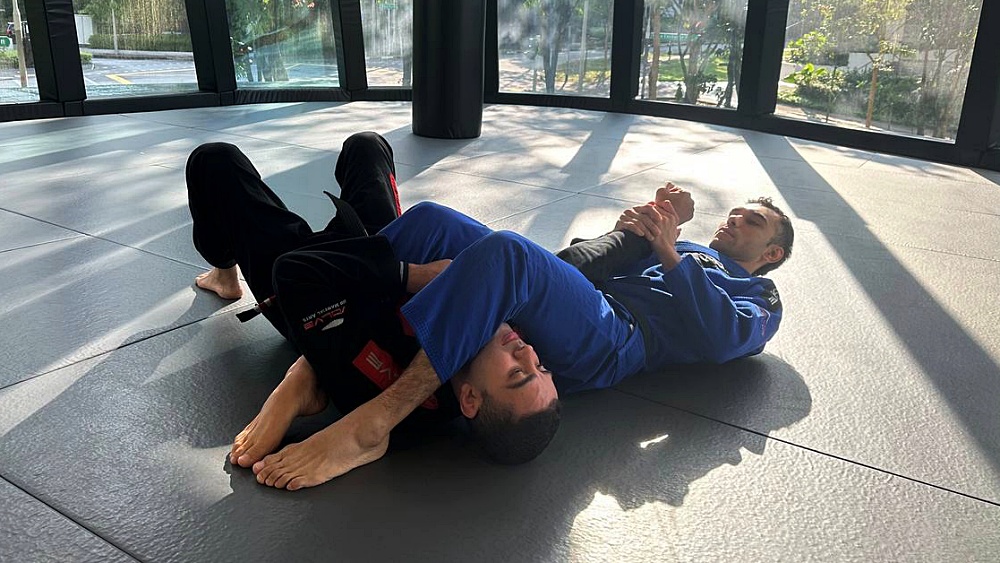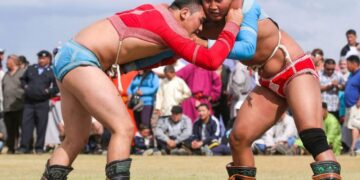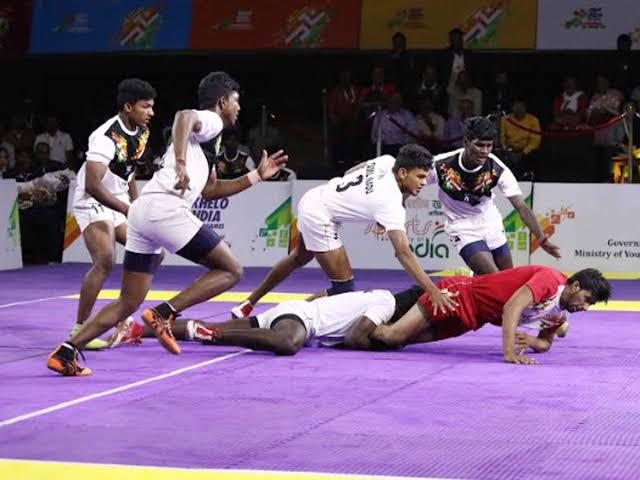
The armbar is one of the most powerful and versatile submissions in BJJ. It is a fundamental technique taught to beginners yet remains a favorite among advanced practitioners and world champions. The armbar is effective because it allows a grappler to isolate and control an opponent’s arm, forcing hyperextension of the elbow joint, which leads to a submission.
One of the reasons the armbar remains such a staple in BJJ is its adaptability. It can be applied from almost any position, making it an incredibly versatile attack that fits into a variety of grappling styles. By learning how to apply the armbar from different positions, you increase your submission rate, control over opponents, and ability to transition seamlessly between attacks. Today, we’ll explore the ways on how to apply the armbar from various positions.
Benefits Of Attacking The Arm
Attacking the arm is one of the most effective ways to secure a submission in Jiu-Jitsu. The arm is relatively easy to isolate, and once trapped, the opponent has limited ways to escape. Unlike chokes, which often require precise positioning around the neck, armbars can be set up quickly and finished with controlled leverage.
Another benefit of arm attacks is that they create follow-up opportunities. If an opponent defends an armbar, it often exposes them to back takes, triangle chokes, or kimuras. By maintaining an aggressive arm attack strategy, you keep your opponent on the defensive, limiting their ability to counterattack or establish their own game.
The Armbar
The armbar (also known as juji-gatame in Judo) is a straight arm lock that applies hyperextension to the elbow joint. The submission is typically executed by securing control over the opponent’s arm while positioning your legs and hips to generate leverage. By pulling down on the wrist and lifting the hips, the elbow is forced into an unnatural position, resulting in a submission.
A well-executed armbar requires more than just pulling on the arm. Proper technique includes tight control, angles, and breaking the opponent’s posture. Also, learning multiple variations of the armbar from different positions makes it significantly harder for an opponent to predict and counter your attacks.
Top 5 Ways Of Attacking The Arm From Different Positions
1) Mount to Armbar
The mount position is one of the most dominant positions in BJJ, and it offers one of the most high-percentage armbars in grappling. From the mount, the key to attacking the armbar is to control your opponent’s posture and arms. A common way to set up the armbar from the mount is by forcing the opponent to defend against strikes (in MMA) or chokes in grappling context. As they raise their hands to defend, trap one of their arms, rotate your body, and step over their head into the classic armbar position.
A critical detail in this setup is keeping the opponent’s arm tight to your chest. If there is too much space, they can escape by pulling their arm free. Additionally, controlling their near-side shoulder with your leg will prevent them from rolling out of the submission.
2) Guard To Arm Crush / Cutting Armbar
The arm crush, also known as the cutting armbar, is an aggressive variation of the armbar that works well from the closed guard or butterfly guard. Unlike the traditional armbar, which relies on hyperextension, the arm crush uses direct compression by squeezing the opponent’s forearm against your body while applying pressure.
This setup is particularly useful when your opponent keeps their elbows tight inside your guard. By forcing their arm across your body and hugging it tightly, you can generate extreme pressure, thus forcing a submission. If they defend the arm crush, it naturally transitions into a classic armbar or an omoplata, making it a great attacking option.
3) Shotgun Armbar From Knee On Belly
The shotgun armbar is a devastating variation of the armbar that works well from a knee-on-belly (KOB) position. Instead of isolating the arm with the standard leg swing, the shotgun armbar involves pinning the opponent’s wrist and controlling the arm while stepping over and finishing with a quick extension.
The advantage of this setup is its speed and unpredictability. Because knee-on-belly is already a dominant and highly mobile position, the opponent is often focused on escaping the pressure rather than defending an arm attack. By transitioning into the shotgun armbar quickly, you can catch them off guard and finish the submission before they have time to react.
4) Armbar From Back Control
The back control position is one of the strongest in BJJ, and attacking the armbar from here is an excellent alternative to the rear-naked choke. A common setup occurs when your opponent defends their neck by grabbing your choking arm. Instead of fighting for the choke, you can use their defensive grip against them by isolating their arm, swinging your leg over their head, and dropping into an armbar.
This setup is particularly effective because the opponent is already trapped by your hooks and seatbelt control. Even if they try to escape, they will struggle to create space because of your control over their upper body. If they manage to roll or bridge out, you can transition back into mount or a triangle choke, ensuring that you stay in a dominant position.
5) Armbar From Kimura Trap
The kimura trap system is one of the most secure ways to control and attack an opponent’s arm. When setting up a kimura, if the opponent tries to resist, you can switch your grip and transition directly into an armbar. This works particularly well when attacking from side control, half-guard, or even standing.
The advantage of the kimura trap armbar is that the opponent is already compromised by the kimura grip. If they refuse to let go or try to defend, you can use the transition into the armbar as a natural counter to their escape attempts. This makes the kimura trap armbar an essential tool for advanced grapplers who want to maintain submission threats throughout scrambles.
Staying Unpredictable & Building A Game
One of the best ways to improve your submission game is by keeping your opponents guessing. If you only attack armbars from the same position, experienced grapplers will recognize the setup and develop effective defenses. By attacking the armbar from multiple angles and transitions, you force your opponent to stay reactive, making them more likely to make mistakes.
To build a strong armbar game, it is crucial to link submissions together. If an opponent defends the armbar, you should have immediate options to switch to a triangle, omoplata, or back control. A well-rounded submission game ensures that no matter how your opponent reacts, you remain in control and one step ahead.
Safety Considerations & Conclusion
While the armbar is a powerful submission, it must be applied with control and awareness. Applying excessive force can cause harm to the elbow, especially if the opponent does not tap in time. In training, always apply pressure gradually and give your training partner time to tap. In competition, be aware that some opponents may refuse to tap, so it’s important to recognize when you have control to avoid potential risks.
The armbar is one of the most effective and versatile submissions in BJJ, and learning to attack it from multiple positions will elevate your grappling game. By mastering setups in different positions, you can develop a dynamic and unpredictable submission repertoire.
You may also like:
BJJ 101: The Shin-To-Shin Position
“Punch a black belt in the face; he becomes a brown belt. Punch him again, purple…” These are the words of Carlson Gracie, one of the pioneers of mixed martial arts. Playing guard in Brazilian…
Brazilian Jiu-Jitsu is widely recognized for its physical benefits, such as improved strength, flexibility, and endurance. However, beyond its physical aspects, BJJ also provides significant mental health benefits. In today’s fast-paced world, many people struggle…
Brazilian Jiu-Jitsu is a constantly evolving martial art that rewards those who explore new positions and attacking strategies. The arm saddle is one of the more advanced yet highly effective positions that have gained recognition…
Brazilian Jiu-Jitsu is a constantly evolving martial art. Over the years, practitioners have continually searched for ways to improve their ability to control, sweep, and submit opponents. Among the many guard variations available, the shin-to-shin…
Brazilian Jiu-Jitsu is always evolving, with grapplers constantly finding new ways to blend techniques. Two skills that have gained popularity in modern No-Gi grappling are wrestle-ups and leg locks. At first glance, they seem like…
The back is the most dominant position in grappling sports such as Brazilian Jiu-Jitsu, Submission Grappling, and Mixed Martial Arts, both in the stand-up and on the ground (back mount). In the stand-up, it allows…
Unstructured or more commonly known as ‘open’ sparring is a cornerstone of any martial art‘s fight preparation, and it’s the closest thing you can find in any gym to real competition. Structured sparring has its…
Boxing is often perceived as an offensive sport where speed, power, and aggression dictate success. While true in certain aspects, at its highest levels, boxing is just as much about defense and control as it…
Aging is an inevitable part of life, but feeling old is optional. It’s time for a paradigm shift if you’ve hit the big 50 and feel your best years are beyond you. Martial arts training…
We get it. Sweating it out at your favorite boxing gym in Singapore is a lot of fun, but sometimes you also want to enjoy nature at a slow pace. So whether you’ve been boxing,…
Combat sports like Brazilian Jiu-Jitsu, Muay Thai, boxing, wrestling, and MMA push athletes to their physical and mental limits. Success in these disciplines doesn’t just come from skill and conditioning but also from proper nutrition….
Combat sports demand a fluid synergy of raw power, speed, mobility, balance, and agility. Animal movements are one of many ways fighters can strengthen their bodies to perform optimally. These exercises involve mimicking the movements…

































